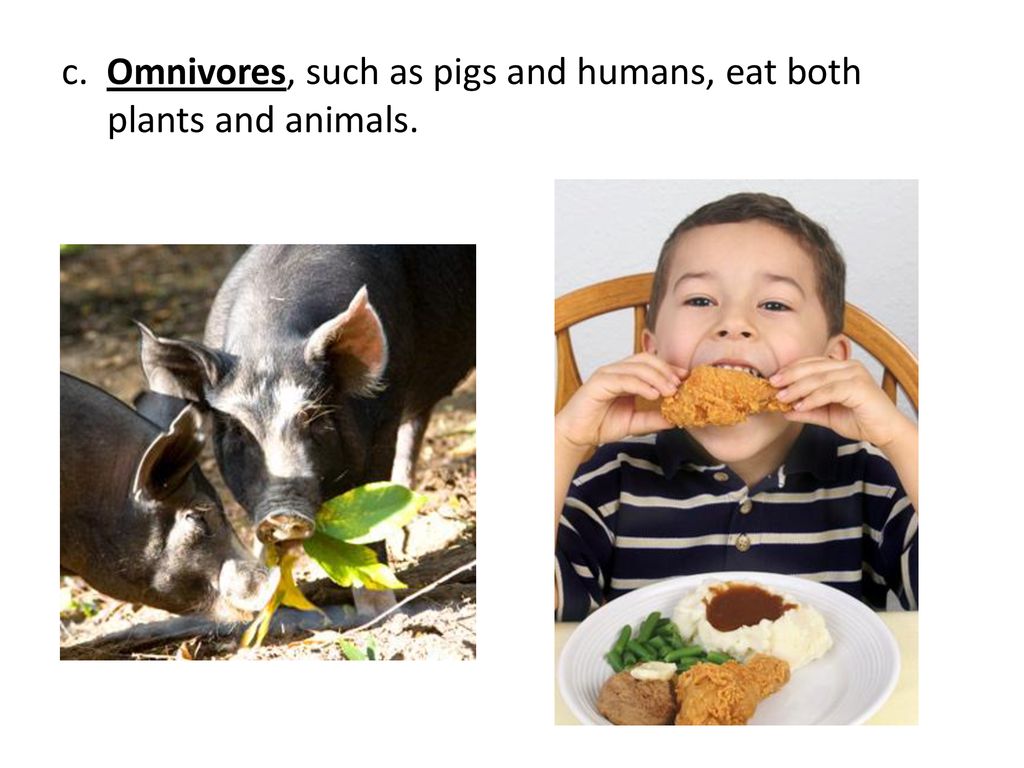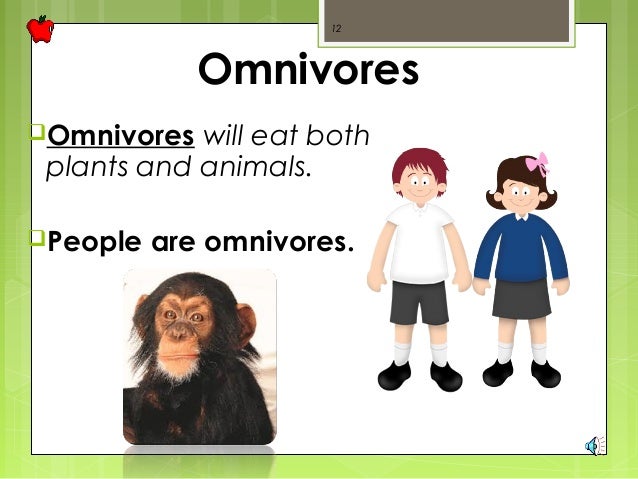Omnivores Dilemma Industrial Food Chain section 1 Biology Diagrams Carnivores eat other animals, whereas omnivores eat both plants and animals. In a desert, a snake is a secondary consumer, eating mice. At the same time, in forests, sea otters are secondary consumers that hunt sea urchins. Humans, bears, and foxes are examples of omnivores in the terrestrial ecosystem. The above food chains coincide in the Omnivores have an advantage in an ecosystem because their diet is the most diverse. These animals can vary their diet depending on the food that is most plentiful, sometimes eating plants and other times eating meat. Herbivores have different digestive systems than omnivores, so omnivores usually cannot eat all of the plants that an herbivore can.

What role do humans play in the food chain? Humans occupy multiple roles in the food chain, primarily as omnivores, as we consume both plants and animals. Our dietary choices can significantly affect the food chain dynamics, as intensive farming, overfishing, and habitat destruction disrupt natural habitats and food sources for other organisms. A food chain describes how living organisms get their food. All organisms, from the most complex to the most simple ones, need food to survive. Living things can be part of multiple food chains and all connected food chains in an ecosystem combine to make a food web.. As shown in the infographic below, a basic food chain is composed of producers, consumers, and decomposers. Keystone species play a crucial role in stabilizing food chains and ecosystems. What Is a Food Chain? So, for example, there are many more plants than there are herbivores and few omnivores and carnivores compared to herbivores. Trophic levels also illustrate energy flow limitations and help us understand why food chains tend to be short

Primary Consumers: Key Roles & Examples Biology Diagrams
What role do humans play in a food chain? Humans play the role of omnivores in food chains.They consume both plant and animal products. Human activities can impact food chains both positively, through sustainable practices, and negatively, habitat destruction and overxploitation. 5. What do Food Chains End with? Uncover how primary consumers drive the food chain. Explore their vital roles, real-world examples, and the ecological impact they have on ecosystems. Primary consumers, also known as herbivores (or omnivores), are organisms that occupy the second trophic level within a food chain.
.jpg)
This article will explore the definition of food chains, the role of energy at each trophic level, and the implications of energy loss for our environment. Table of Contents. As secondary consumers, carnivores and omnivores consume primary consumers, yet they face the same energy transfer limitations. The energy they gain is significantly 1. What is the role of humans in the African food chain? Humans are omnivores and play a role in both consuming and impacting the African food chain. 2. How does climate change affect the African food chain? Climate change can disrupt the delicate balance of the African food chain by altering rainfall patterns, vegetation growth, and animal FAQs: Further Insights into Human's Position on the Food Chain. Here are 15 frequently asked questions to delve deeper into the complexities of human's role in the food chain: Are humans technically at the top of the food chain? No, not definitively. Humans are omnivores, placing us at varying trophic levels.
